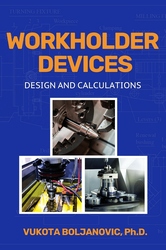Book Description
Advancements in the fields of mechanization and automation have led to large strides forward for the entire manufacturing industry. Various products, ranging in size from cars to small circuit components, are made through automated procedures in manufacturing facilities. These processes help improve efficiency, save on labor costs, and reduce the occurrences of defective products, improving company growth and product quality.
A common feature of automated processes is the need for the item being worked on to be held firmly in place while work is being done on it—“workholding.” Workholders help improve the economy of production by creating smooth operational processes and helping to facilitate quick transitions from one work station to another. This simplifies and streamlines the entire mounting parts operation.
Manufacturing workholders use many different methods to hold the parts securely, including hydraulic, electric, pneumatic, and mechanical holders, depending on the application. Workholding devices are regularly referred to as “jigs” and “fixtures,” and are often used interchangeably. A fixture secures the workpiece and allows the tool (but does not guide it) to move relative to the workpiece, while a jig holds and locates the workpiece and actually guides the tool.
Workholder Devices presents the fundamentals of workholders design for machining and welding operations with their relevant applications, so readers can clearly assess the capabilities, limitations, potentials, and competitive aspects of each of these devices. The author shows how dynamic workholders are subject to constant change, improvement, and innovation.
Unique Features
- Contains more than 180 illustrations, numerous calculations, tables, and essential appendices.
- Special attention is paid to modular systems, clamping devices, and clamping force calculation.
- Perfect for students of manufacturing engineering, process engineers, design engineers, and drafters, as well as quality control and maintenance and reliability managers and technicians.







